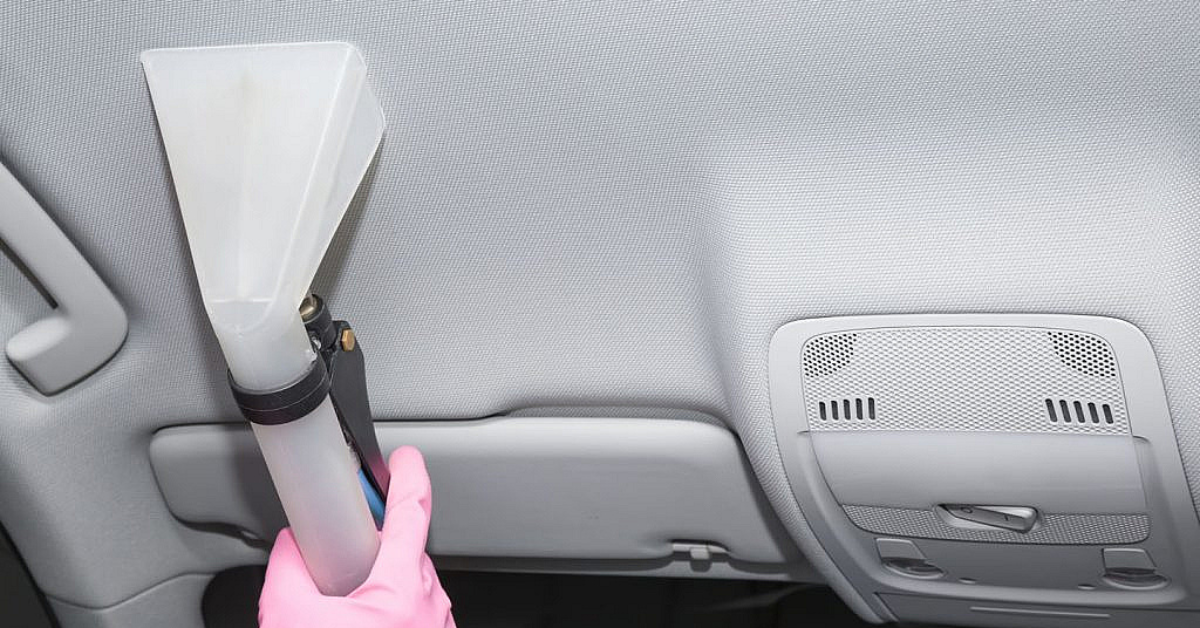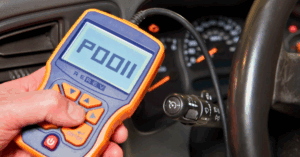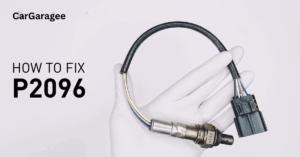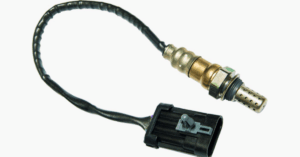A sagging headliner not only hampers your car’s appearance but can also affect internal components like wiring and insulator parts, making it a top priority for upkeep. The problem usually arises from exposure to temperature changes, moisture, and poor maintenance, causing the fabric to separate from the backing board. While removing the headlining for a full repair is often recommended, there are effective ways to fix it without the hassles of taking it off. Using high-temperature adhesive, double-sided tape, or securing with pins can quickly solve slump issues.
However, avoid overheating the lining during repair, as it may lead to deterioration or damage. For more durable results, a professional steam cleaner or paint roller method can help set the fabric evenly without wrinkles. Regular maintenance and checking for early signs of sagging can prevent expensive repairs down the line, ensuring your vehicle remains in good shape and comfortably functional for everyday driving.
What Is a Headliner In A Car?
A headliner is the fabric or vinyl material that covers the roof inside your car, providing both insulation and an improved appearance. It’s more than just a decorative feature — it helps to buffer outside noises, maintain the temperature inside, and even improve acoustics for the car’s audio systems. The headlining is typically attached to a foam-backed board using clips or screws, and it often comes with trim pieces, like visors and grab handles, to give the interior a polished look.

Over time, materials like polyurethane, suede, or woven cloth may start to wear out, especially around the edges and pillars, making the sagging headliner noticeable. For older cars, aftermarket options are popular to replace the worn original lining, and these upgrades can vary from budget-friendly to more expensive, depending on the quality and feel. Whether your headliner is customized or standard, it plays a crucial role in keeping your driving experience comfortable and your car looking smooth and well-kept.
The Reasons Why Car Headliners Start Sagging?
1. Heat and Extreme Weather Conditions
Over time, exposure to extreme weather conditions like heat can cause the headliner glue to melt, making the fabric loosen and sag from the backing board. This is a common issue in hot climates where cars are left under the sun for long periods.
2. Inadequate Waterproofing
Some vehicles suffer from inadequate waterproofing, allowing water to seep into the roof liner foam, which can deteriorate the adhesive. Moisture weakens the bond between the fabric and the roof, causing the headliner to start drooping.
3. Physical Strain from Children or Pets
Drivers with children or pets often face issues with sagging headliners because of scratching, pulling, or rough handling. These actions put physical strain on the headlining, speeding up the failing process and making it more prone to drooping.

4. Poor Quality Adhesive or Foam Liner
The foam liner beneath the headliner may begin to deteriorate over time, especially if poor-quality adhesive was used during manufacturing. Inferior materials cannot withstand extreme temperatures or moisture, leading to the fabric becoming separated and sagging.
5. Age and Wear Over Time
Like any car component, the headliner will degrade over time due to regular use, exposure to weather, and general wear and tear. Older cars are more likely to have drooping headliners as the fabric and adhesive begin to break down.
How To Fix Sagging Headliner Without Removing?
Replacing the headliner in an older car can be costly, often matching the vehicle’s overall value, making it a less practical solution. Instead, you can follow our easy, budget-friendly tricks on how to fix a sagging headliner without taking it out, ensuring a smooth, simple process that saves both time and money.
Use The Old-fashioned Gluing
Using old-fashioned gluing is one of the easiest ways to fix a sagging headliner without the need for replacing it, especially in old cars where a full replacement can be financially impractical. For fabric that has sagged partially, such as in the corner or along the edges, applying a special adhesive with a spray can is a budget-friendly solution.
Unlike ordinary glue, a specialist adhesive ensures the headlining stays in place and distributes evenly without causing damage. Many DIYers prefer this method because it’s a money-saving process that avoids the need to completely remove the panel or pay for labor expenses. After spraying, gently press the fabric to re-attach it and ensure a smooth finish. This trick works well for old cars, offering a practical fix that keeps your car’s interior looking neat.
Pin It Down
Using pins is a quick and effective method to fix a sagging headliner without spending much time or money. This simple fix works well if only half of the fabric is coming loose. You can use sequin pins or similar items to gently push the headliner back into place, securing it to the foam backing board. For a more polished look, try to arrange the pins in a pattern that’s both practical and visually pleasing. This method ensures your car’s interior stays tidy while serving its purpose of holding the headliner securely.
Clear-headed Twist Pin
For a no-fuss and inexpensive way to fix a sagging headliner, clear-headed twist pins are one of the best solutions. These saggy stoppers hold the headlining securely in place without creating holes in the thin board, making them a better option than glue or tacks, which can cause damage. Twist pins are easy to use, even if the entire headliner is falling, and they prevent the fabric from slipping onto your head.
Since headliners are often made from fragile fabric, this method helps avoid costly or complicated repairs. By choosing twist pins, you can protect your car’s interior and handle the issue with careful, practical steps.
Use The Steam Cleaner And Paint Roller Combo

Using a steam cleaner and paint roller is an effective way to fix a sagging headliner without needing to remove it. The steam helps melt the glue, allowing the fabric to reattach to the frame smoothly. After applying steam, an unused roller can assist in pressing the fabric evenly to avoid creases or wrinkles.
This method works best when the headliner sags around the edges or in stubborn spots. Be cautious not to overheat the material, as it may shrink, burn, or become dried out. This trick is ideal for car owners looking for a practical solution to a stubborn task while maintaining the interior’s comfort and appearance
Using Staples And Hair Spray
Though it may seem like an unusual method, using staples and hair spray can be a cheap and effective way to fix a sagging headlining, especially in old cars where costly repairs may not be worth it. Start by securing the fabric to the backing board with a stapler gun, as a conventional paper stapler won’t provide enough strength.
After securing the fabric, apply hair spray over the headliner to help the material stay in place. Once the spray has dried, carefully remove the staples to prevent tearing. This semi-permanent fix is a practical option for those looking to save money while preventing further sagging without needing to replace the headliner.
Using Double-Sided Tape
Applying double-sided tape is an easy and suitable fix for a sagged headlining in areas like the edges or around the rearview mirror. It works best during the initial stages when the fabric starts to detach. Make sure to use high-quality carpenter tape with strong adhesiveness to ensure the fabric stays in place.
Carefully stick the tape to the roof and press the headliner evenly to avoid further damage. While this hack is a quick solution, regular maintenance is essential to prevent the problem from getting worse, helping you avoid more costly replacement methods.
Read More:
Mercedes B1 Service: Meaning, Checklist & Cost [Explained]
Why Is Your Electronic Throttle Control Light Suddenly On?
What Can You Do To Prevent The Sagging Headliner?

Here are practical tips to prevent your car’s headliner from sagging, ensuring it stays in good condition for a longer time:
- Keep Interiors Clean and Dry: Regularly clean your vehicle using a gentle hand and avoid dirt, moisture, and particles that can weaken the fabric over time.
- Avoid Harsh Chemicals and Abrasive Products: Use a cleaner that is safe for headlining material and avoid abrasive products that can cause damage to the ceiling.
- Protect from Extreme Temperatures: Park your car in the shade to reduce exposure to sunlight and overheating, which can melt the glue and cause the headliner to loosen.
- Check Rubber Seals Regularly: Inspect rubber seals to ensure no water leaks inside, as moisture can cause stains and lead to sagging.
- Use Steam Cleaning Carefully: If cleaning is needed, use a steam cleaner at short intervals with low pressure to avoid damaging the fabric or glue.
- Address Loose Areas Quickly: If you notice spots or loose corners, use pins or stapling as a temporary fix, but avoid hard scrubbing or soaking the fabric to prevent further damage.
- Perform Regular Maintenance: Apply regular care to preserve the headliner and prevent costly replacement by addressing issues early before they get worse.
Cost For Fixing The Headliner
The cost of fixing a sagging headliner can vary based on factors like wear and tear, car model, and the location of the repair shop. On average, four-door sedans cost between $100 and $250, while larger vehicles like SUVs and minivans may cost more due to the increased service time and material needs. For luxury models, the pricing can exceed a thousand dollars, especially if you’re changing the upholstery or seeking repairs from an expert. Here’s a quick breakdown of statistically estimated costs for popular car models:
- Mini Cooper: $495
- Honda Civic: $195
- Honda Accord: $425
- Jeep Cherokee: $470
- VW Jetta: $370
- Chevrolet Silverado: $370
These numbers can vary depending on whether you’re doing a simple fix or a full replacement. For true experts, the expenses can double, but choosing a reliable professional ensures long-term durability. Costs also depend on the location, so always get multiple quotes to avoid overpaying for repairs.
Possible Additional Expenses
1. Older Vehicles with Hung Headliners

In some older vehicles, headliners are hung and suspended by rods, which makes the repair process more complex. Removing the front and rear windscreens, along with weather stripping from the windows, adds to the job time and increases the overall costs.
2. Luxury Brands and Tight Fits
For expensive brands like BMW, the rear shell of the headliner often needs to be removed. Due to the tight fit, it may require flexing the headliner to get it through the door, increasing the risk of breaking the material. This process can be more expensive and time-consuming.
3. Vehicles with Sunroofs
If your car has a sunroof, expect higher expenses due to the additional steps involved. The headliner removal process requires lubrication and cleaning, and more man-hours are needed to safely remove the material without causing damage.
4. Overall Costs for Big Vehicles
For big vehicles like SUVs or minivans, the repair process can take longer, which increases pricing. These factors can push the total cost to over a thousand dollars, especially if special materials or extra labor is required.
FAQs On The Sagging Headliner and Related Issues
How much does the sagging headliner replacement cost?
The replacement cost for a sagging headliner typically ranges from $70 to $170 for labor on a common car, but the total price can go up to thousands for luxury vehicles. Aftermarket kits offer reasonable prices, while factory-original parts tend to be more expensive.
The overall cost depends on the car type, item, and installation needs. For older cars, a bargain deal can be found with new kits, but fixing a broken headliner may still require professional procedures to avoid wasting time and money.
How do you fix a sagging headliner without removing it?
You can fix a sagging headliner by applying glue, using double-sided tape, or securing it with pins. For stubborn areas, use a steam cleaner and press the fabric back with a paint roller. Start with spot cleaning and only resort to deep cleaning if necessary.
Which glue is best for car roof lining?
High-temperature adhesive spray is the best option for headliner repairs. Professionals recommend using 3M Hi-Tack spray, with about 2 cans needed for a standard sedan and more for a larger vehicle.
What holds a headliner up?
A headliner is a foam-backed cloth covering that is attached to the ceiling of a car using adhesive.
How to fix a drooping ceiling in a car?
To fix a drooping headliner, apply glue spray to the loose or peeling underside. Wait 5 minutes for the adhesive to become tacky, then press the material back into place to secure the sagging ceiling.

Mian Hashir is a passionate automotive enthusiast and the lead author at Car Garagee, a website dedicated to providing in-depth car reviews, maintenance tips, and the latest news in the automotive world. With years of experience in the industry, Hashir combines his technical knowledge with a love for cars to deliver insightful and engaging content. Whether you’re a car owner or a curious reader, Mian Hashir’s articles help readers make informed decisions, from choosing the right vehicle to understanding how to keep it in top condition.







